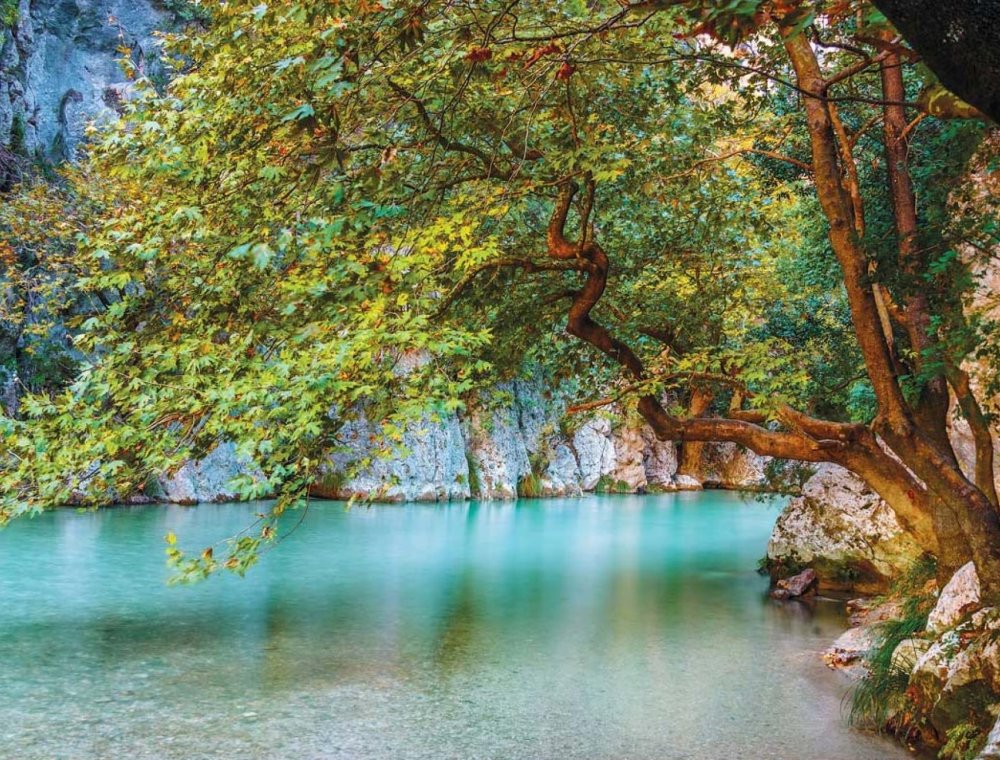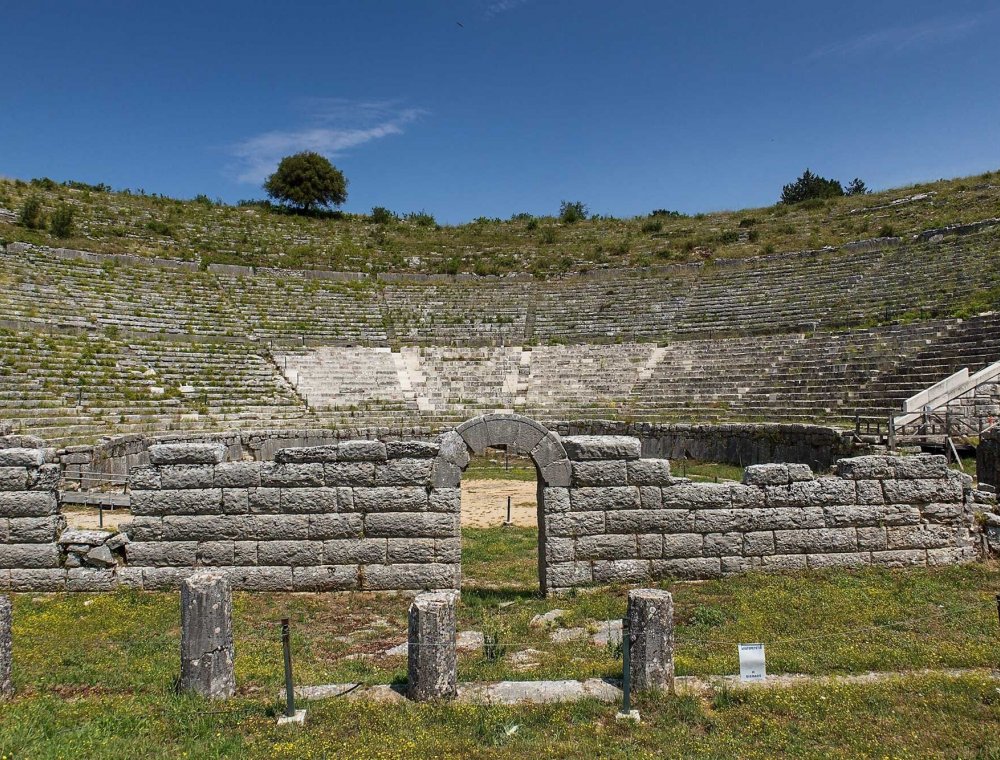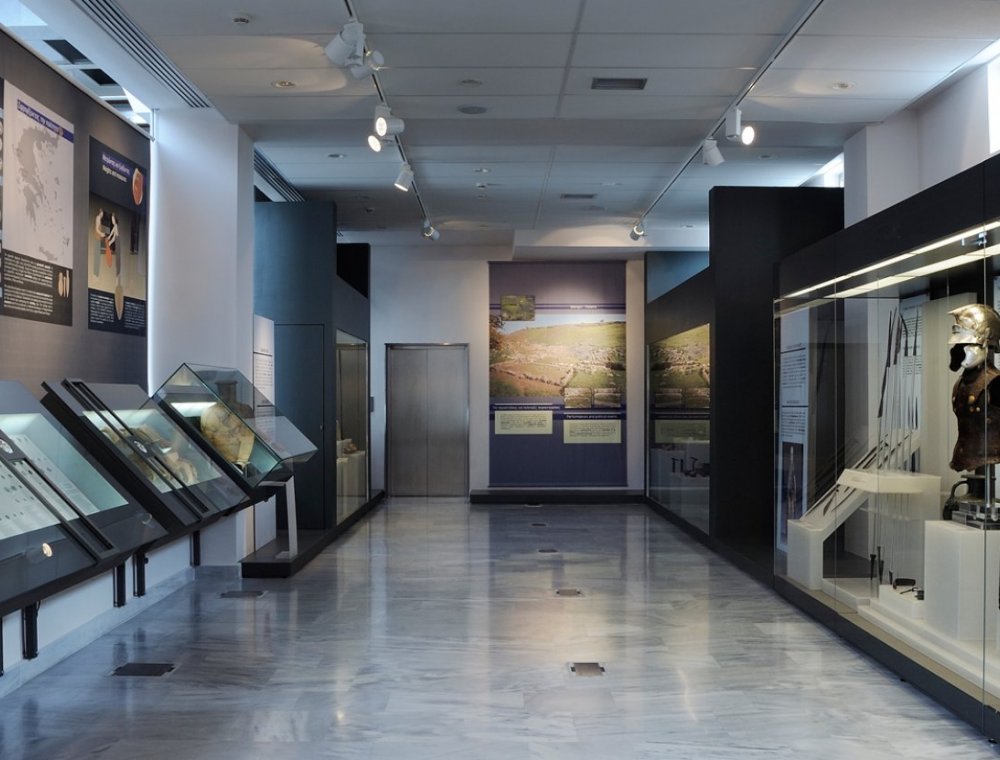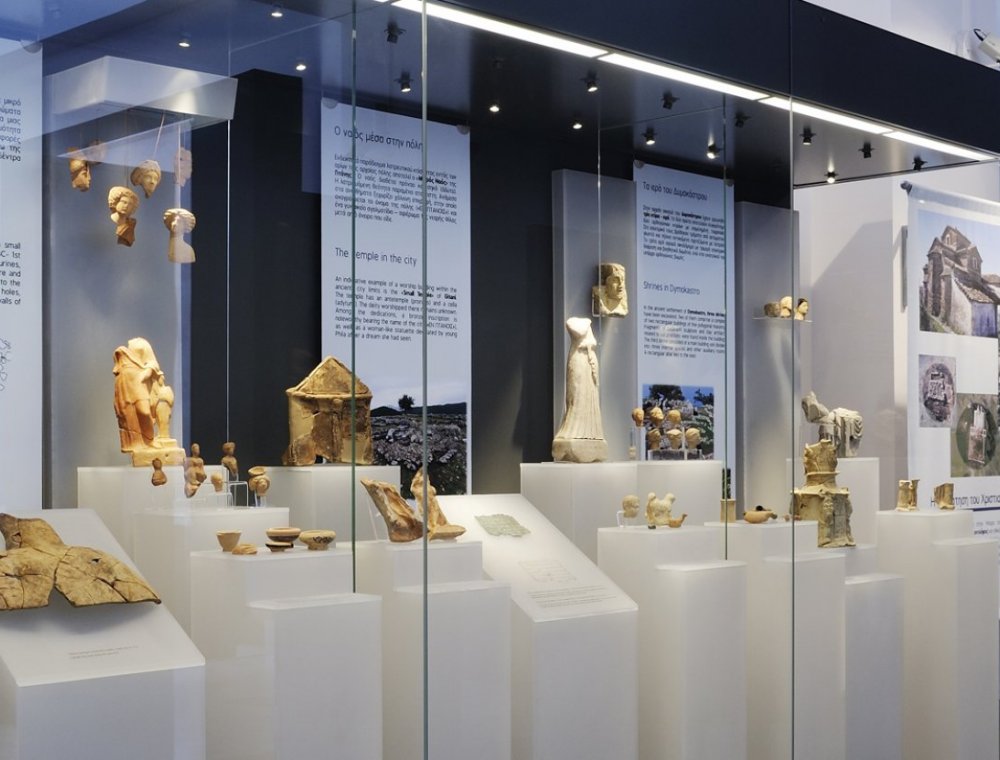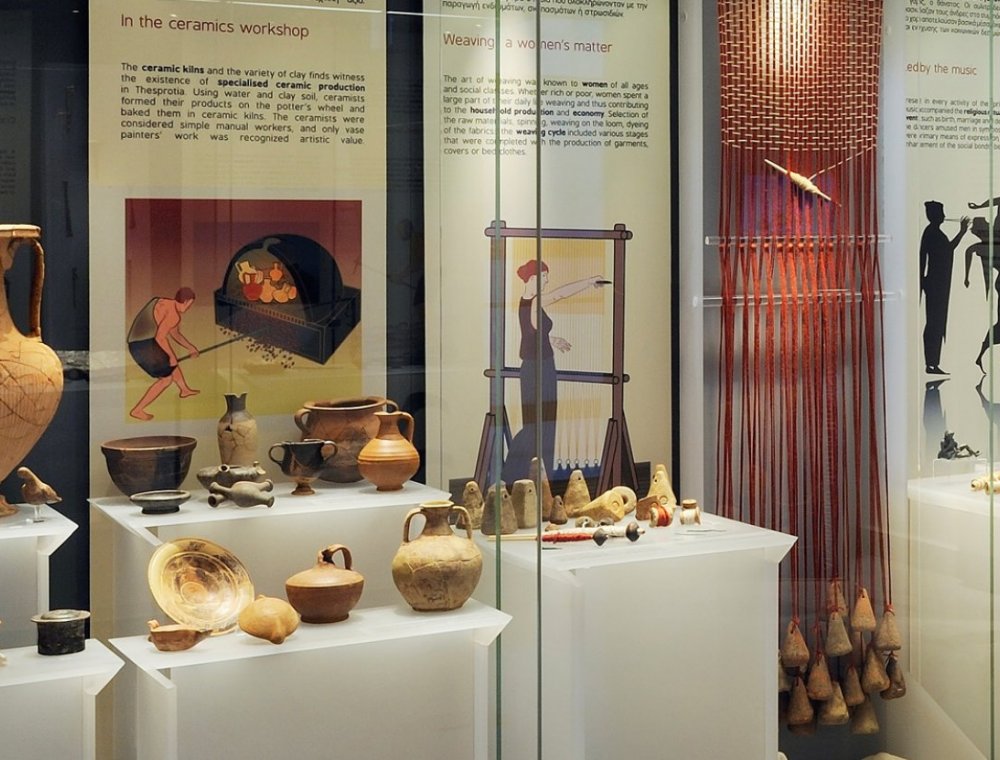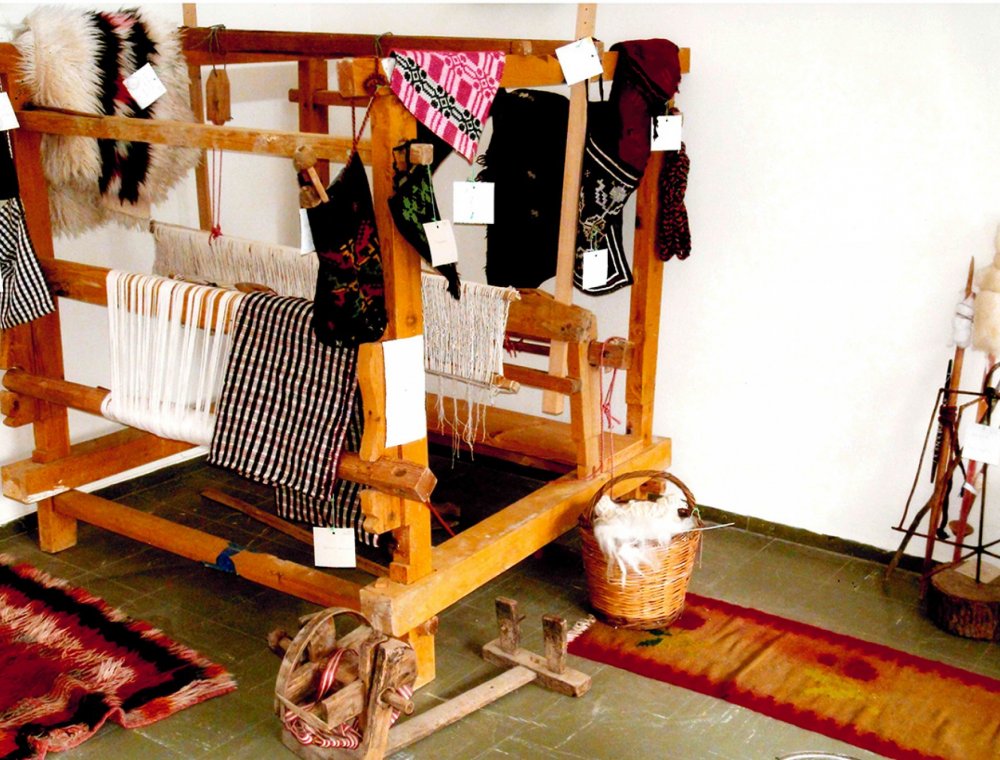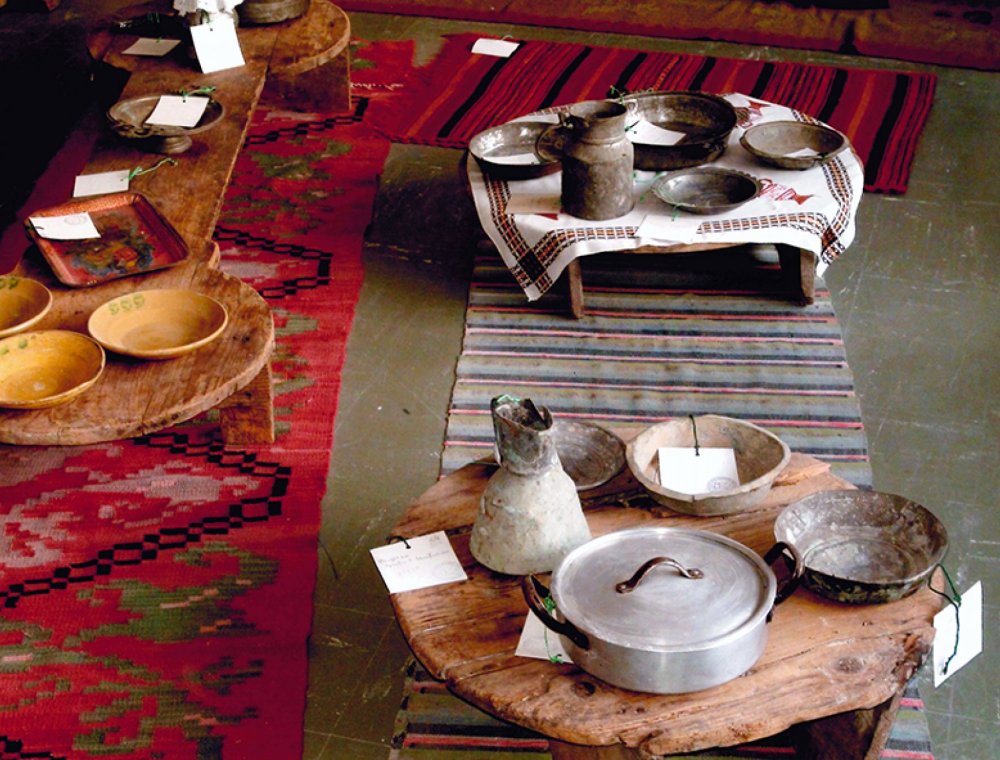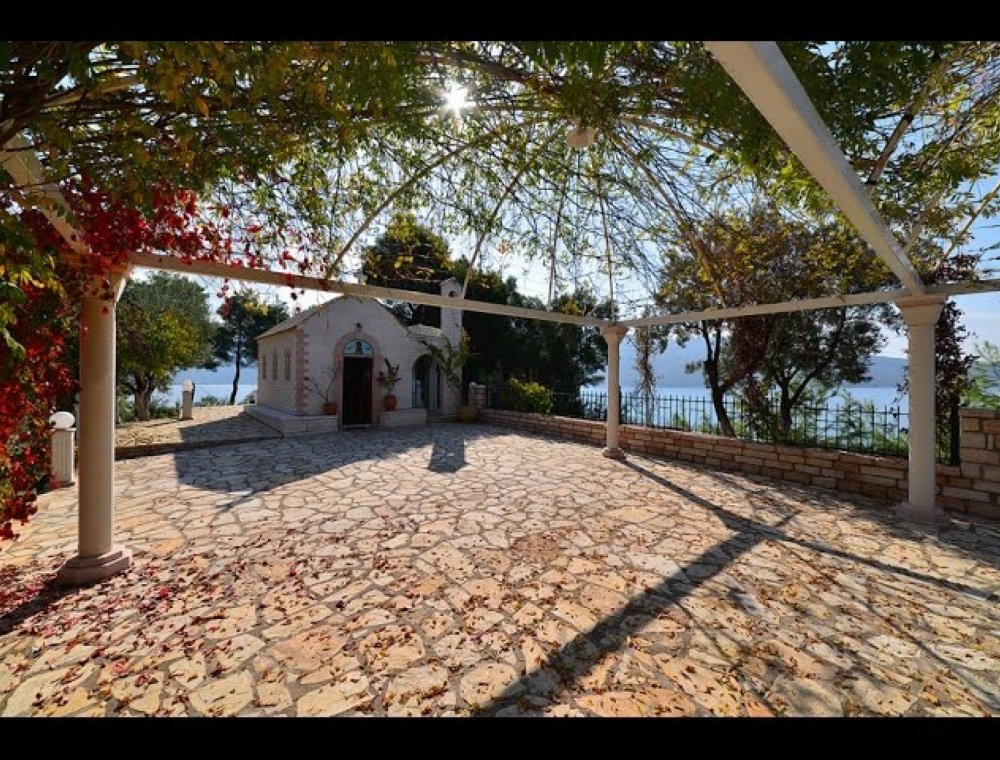The attractions of the area
- Archaeological Museum of Igoumenitsa
The Archaeological Museum of Igoumenitsa is a modern regional museum that has been operating since the end of 2009 in a newly built building under the supervision of the Ephorate of Antiquities of Thesprotia and is located at the northern entrance of the city on the old Igoumenitsa-Ioannina National Road. The collection of the Museum's permanent exhibition entitled "Country of Thesproton" covers the archaeological periods from the Middle Paleolithic (100,000 years before today) to the times of Ottoman rule (19th century AD) and presents, through selected finds and rich accompanying supervisory material, the most important historical stations and the diversity of the historical past of Thesprotia. Periodical exhibitions and Educational seminars that take place at the Museum encourage visitors to actively participate, turning it into a lively space of interaction and experiential experience worth visiting.
- Folklore Museum of Plataria
The Folklore Museum of Plataria was founded in 2007 in the Old Primary School of Plataria. Its collection concerns local traditional culture during the industrial period and the 20th century. The museum exhibits utilitarian objects and representations of traditional occupations and tasks for the acquisition and production of materials and goods, as well as objects of household equipment, such as kitchen utensils, items of personal clothing, serving utensils, household items, etc. Tourists who visit it will understand the life, occupations and household of this era.
- Chapel of Agia Paraskevi
On the road to Igoumenitsa and at a distance of 3 km from Plataria is the chapel of Agia Paraskevi, which was renovated in 2006 with the aim of highlighting the ruins of the ancient church, which functioned for the first time in 1966. The Celebration of Agia Paraskevi takes place on the 26 July every year with the holding of a big festival in the center of the village. The icon of the Saint is transported by sea by boat from the Church to the port of the village, where a litany follows. The courtyard of the church full of blooming flowers combined with the location (next to the sea) is a pole of attraction for visitors to Plataria.
- Acherontas River
Acheron is a river of the Epirus Region and crosses the prefectures of Ioannina, Thesprotia and Preveza. Its springs are many, with the first being the springs from Mount Tomaros, from the mountains of Souli and the mountains of Paramythia, but also those of the village of Glyki in Thesprotia. Its mouth is the Ionian Sea and the village of Ammoudia Prevezis. The length of the river amounts to 52 km, which have been explored, with the most recent section being the 10 km Haradra of Acheron in June 1994 by the EOS team of Preveza.
According to mythology, Acheron was the river where the "soul transmitter" Hermes delivered the souls of the dead to Charon to end up in Hades. However, the Ancient Necromantheum of Acheron, today's village of Mesopotamos, allowed visitors to communicate with the souls of their dead relatives.
The Acheron River is divided into parts with the most important being the Mountainous part, the Narrows of the Acheron (Haradra), the "Gates of Hades", the sources of the Acheron at Vouvopotamos, from Charadra to Nekromanteio and the floating part of the Acheron - the forest of Persephone-the mouth of the river.
The intense changing morphology of the river combined with the flora and fauna that it has create a magical place, which visitors can enjoy through various activities, such as canoeing, kayaking, rafting, hiking.
- Ancient Dodoni
Ancient Dodoni, which is 71 km from the village of Plataria, is considered one of the most important archaeological sites in Greece.
The Oracle of Dodoni was an important place of worship for Dia, while in the Bronze Age the position of the leader of the gods was held by the goddess Gi or some other female deity associated with fertility.
The Ancient Theater of Dodoni is one of the largest surviving ancient Greek theaters with a capacity of 18,000 seats, which was built in the 3rd century BC. and was an integral part of the holy temple of Dodoni.





 Gallery
Gallery